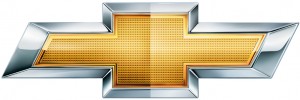Bankruptcy be damned, it seems. Almost exactly two years after its parent, General Motors, emerged from Chapter 11 Chevrolet says it set an all-time record with sales for the first half of 2011 reaching 2.35 million.
Of course, when it was founded, a century ago, Chevy wasn’t moving metal in 120 different countries. The new record – which tops the previous peak by a solid 286,499 cars, trucks and crossovers – was buoyed by all-time bests in a number of those markets, including Brazil, China, France and South Africa.
Here in the U.S., meanwhile, Chevrolet sales are up 16% for the January-June period, the lead GM division posting nine consecutive months of year-over-year sales gains.
“We will continue to work at bringing new customers to the Chevy family – no matter where they live,” proclaimed GM’s global marketing czar, Joel Ewanick, in a company announcement.
Chevy’s strong performance is not just significant but essential. Emerging from bankruptcy, on July 10, 2009, GM halved the number of brands it offered in the U.S., ultimately closing Hummer, Pontiac and Saturn, while selling off Saab. (That Swedish maker has plenty of its own problems. Click Here for more.)
So far, the surviving brands – Chevy, Buick, GMC and Cadillac – have been making up much of the North American sales volume given up when the other four marques were abandoned.
But while Chevrolet has been and will continue to be the big box brand for GM in the home market, its role is rapidly expanding abroad. With German-based Opel continuing to struggle, GM management has decided to shift strategy and make Chevy the global lead brand.
The marque, founded by one-time racer Louis Chevrolet in 1911, has long been a powerhouse in Latin America, but it is a relative late-comer in much of the rest of the world. The good news for GM is that while still a small player, Chevy has become the fastest-growing brand in Europe. And it is rapidly gaining on Buick, the first marque that GM offered when it entered China a dozen years ago.
A wave of new products have helped drive the Chevrolet surge, officials contend. Notable among the recent offerings is the Cruze, which was the best-selling passenger car in the U.S. in June, surging past perennial leaders Toyota Camry and the Honda Accord. That victory requires an asterisk, however, as both Japanese makers suffered serious shortages due to the effects of the March 11 disaster in Japan.
Long focused on large trucks, which have traditionally provided the bulk of GM profits, the Cruze underscores Chevrolet’s new-found focus on small passenger cars. It sold 100,000 copies of the Spark minicar during the first half of the year, and will soon launch Spark in the U.S. It will share showroom floor space with the new Sonic, a replacement for the old Chevy Aveo.
Notably, Sonic will be produced in a suburban Detroit plant, rather than imported from Korea, like the old Aveo. That shift was made possible by a two-tier union labor agreement which is expected to significantly reduce the cost of producing the new subcompact.
Arguably one of the most important new products for Chevy was barely a rounding error on the first-half sales chart. So far, sales of the Chevrolet Volt can be measured in the 100s, but the maker is ramping up production at the Detroit-Hamtramck Assembly Plant as it wraps up a summer break. The goal is to market 16,000 by the end of 2011 and 60,000 next year. (Click Here for the complete story.)

